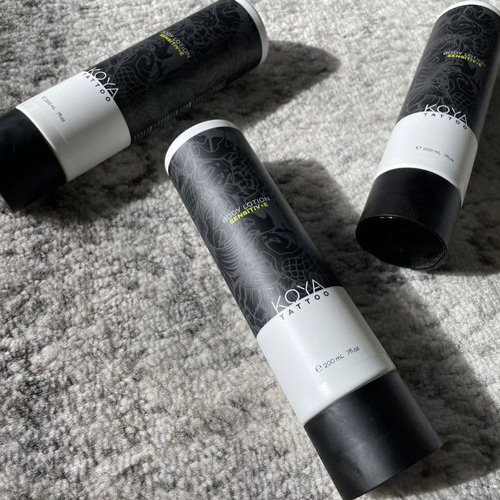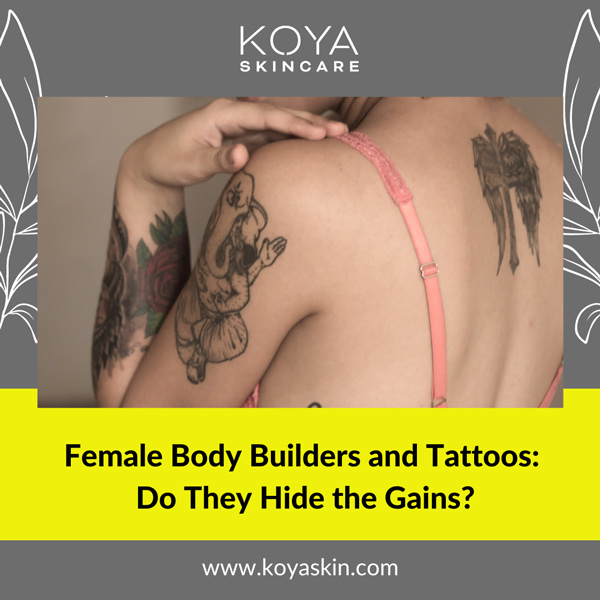
What does bodybuilding mean to you? Is it your tool of empowerment, surpassing all limits you thought you couldn’t reach? Or a symbol of your strength and the badass woman, mother, or daughter that you are.
Whatever it is, it’s certainly more than the physical aesthetics. Of course, the rippling muscles and curvy figure are great perks, but other than that, they represent the determination, hard work, and dedication it has taken to get you there. They tell a part of your story and resilience.
And do you know what else evokes images of a resilient and dedicated person who rises above adversity? Tattoos. Add a tattoo to your physique, and boom! You get the fearless, sexy, and invincible woman that you are.
But wait? Don’t tattoos hide gains on muscles?
Well, the short answer is, it depends. The design and positioning of your tattoo can hide your gains or complement them.
That doesn’t mean you shouldn’t get inked. It simply means you must consider the following factors before getting a tattoo.
- Tattoo design
- Tattoo placement
- Flow and shape of the tattoo
Let’s guide you through the steps that’ll ensure your tattoo complements your curvy physique instead of competing with it.
Table of Contents
- Choosing Your Tattoo Design
- Choosing the Placement of Your Tattoo
- Get a Skilled and Experienced Tattoo Artist
- Allow Your Tattoo to Heal Before You Resume Training
- Why You Should Use the KOYA Tattoo Lotion
1 - Choosing Your Tattoo Design
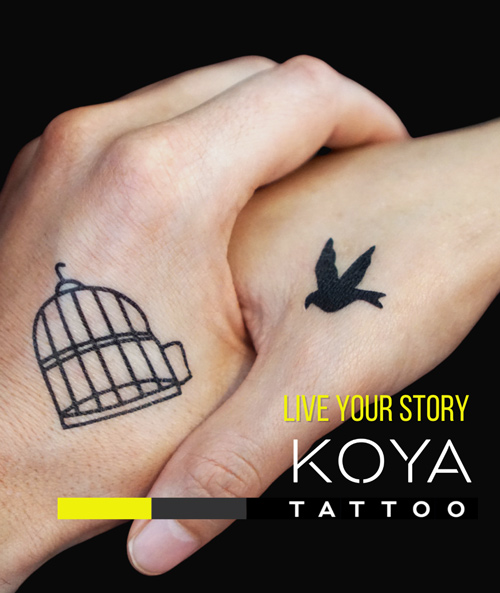
You probably already have an idea in mind of the tattoo you want. You might be thinking of an animal that represents your strength, or a quote you live by. Perhaps it’s something that motivates you every day.
Whatever it is, just make sure it reflects your personality. Tattoos are permanent body art, and you don’t want a tattoo that you’ll regret later, since tattoo removal can be quite expensive and difficult.
So, what kind of tattoo designs are available? Different tattoo styles depend on their inspiration. But let’s focus on the drawing itself since that’s what affects the appearance of your physique.
For that, you can either go for a simple design or an intricate design.
A simple design is crisp and concise. Such designs are usually in one color with the overall image less than four square inches.
This design is for you if you want something meaningful and minimalist. Some examples of simple designs include:
- Birds and butterflies
- Hearts and symbols
- Meaningful words
A simple design is easy to hide in areas away from your defined muscles. This ensures it doesn’t hide your gains and your well-built body is seen clearly. Some areas you can get this tattoo on include:
- Wrists
- Calf
- Fingers
- Behind your ear
- Forearm
If you want to go all-out with a tatt that turns heads, consider an intricate design.
This one has a lot more detail added to it with fine lines and eye-catching imagery. It can be multicolored or shaded black, but it brings up a very vivid image with its meticulous fine lines, patterns, and dot work.
Some examples of such a design are a(n):
- Realistic design of an animal
- Patterned tribal tattoo
- Illustrative tattoo of a flower
- 3-D image of a person
For this design, you need to be very careful with its positioning. An intricate design needs to be larger than four square inches for the details to come out more clearly. And a large tattoo size will only flow well over the wider areas of your body where you gain muscle.
2 - Choosing the Placement of Your Tattoo

So, what are the best positions to have your tattoo on?
It’s best to look for an area where fat and muscle mass won’t change drastically. Significant fat or muscle gains will damage the design and appearance of your tattoo.
Moderate muscle growth from a strict diet and training plan is okay and won’t distort your tattoos. Some areas where muscle gain doesn’t change significantly include:
- Chest
- Shoulders
- Forearm
- Neck
- Hands
That doesn't mean you can’t get a tattoo on other parts of your body.
You’ve worked so hard on your physique; you can get a tattoo anywhere you want.
Be careful, however, with the tattoo design you choose to have on your:
- Hips
- Abdomen
- Inner arm
These areas are most prone to getting stretch marks from significant weight gain, weight loss, and pregnancy, which affect the appearance of the tattoo.
What you can do for such areas is avoid a design that has straight lines or calligraphy. If you gain weight in these areas, it’ll be easy to note the lines aren’t straight anymore or the calligraphy is slightly skewed.
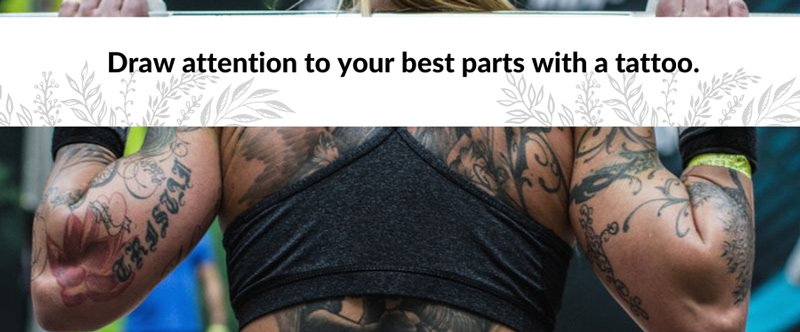
How to Ensure Your Tattoo Complements Your Physique
If you’re going to get ink on your chest, upper arm, or shoulder, you need to make sure your tattoo doesn’t hide your gains in these areas.
Here are some helpful tips to ensure that doesn’t happen:
Define your muscles with flowing lines
A tattoo design that follows your muscular tone will add more definition to your lean muscles.
How can you achieve this? Let’s assume, for instance, that you think your arms are lean. Make sure your tattoo artist follows your unique muscular structure and contours your arm so that every curve is connected. A nice ‘S-curve’ tattoo will attain this.
Your tattoo doesn’t need to have lines. Only that the patterns and details in it should flow with the shape of your muscles.
Draw attention to your best parts with a tattoo
If there’s a part of your body that you’re proud of, you can use a tattoo to make it more prominent.
For example, to show off your abs, you can get a tattoo on the side of your abdomen to draw attention towards it. The tattoo will stand out and the next thing that someone will notice is your well-defined abs.
Always ensure to inform your tattoo artist what you’re trying to achieve.
Use a tattoo to conceal your weak spots
Perhaps you already have stretch marks from pregnancy. Tattoos can diminish their prominence and make you appear flawless.
Your tattoo doesn’t have to outright cover your stretch marks. Choose a design that draws attention away from your stretch marks and instead directs it to the tattoo. A professional tattoo artist will be able to help you select such a design.
3 - Get a Skilled and Experienced Tattoo Artist
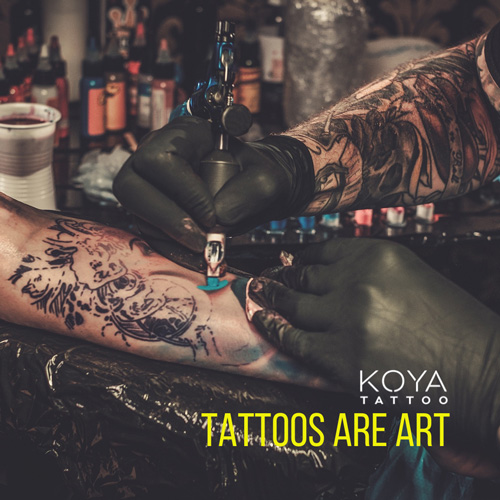
A skilled artist is crucial to ensure you get your tattoo done right. They’ll also help you choose a design that’ll meet your objective and show off your personality.
Here are some things to look out for when choosing a tattoo artist:
- Make sure the artist operates from a reputable shop. Steer clear from an artist who works from their parents’ basement since that’s a sign they’re unlicensed.
- Visit the shop and inspect the premises for cleanliness. Good hygiene is important to avoid infections during inking.
- Ask for references or look up reviews of the artist online. Learn if past customers were satisfied with the service they got.
- Consult with the artist before your appointment. A quick chat with them should reassure you of their skill and make you more comfortable with them before your appointment.
An amateur artist can mess up your tattoo design and positioning, which will conceal your gains.
4 - Allow Your Tattoo to Heal Before You Resume Training
So now that you're freshly inked, it's time to hit the gym and work on those gains. Or is it?
While you see your tattoo as body art, your body does not. The tattoo process involves penetrating a needle through your skin multiple times to achieve your desired design. Your body interprets this as an injury, and it needs time to recover and heal.
Your tattoo artist will recommend how long you’ll need to keep off of strenuous exercise—the average time is usually at least one week. But even when you get back to exercising, do so gradually. Make sure you avoid working out the area that just got freshly inked.
For instance, if your tattoo is on your arm, focus on cardio or working your legs. Keep off of weight-lifting for another week.
Pay attention to how your body feels before you resume training. If you still feel uncomfortable even after a week, it's okay to take more time off.
Proper aftercare is also very important. Ensure you keep your tattoo hydrated and moisturized with a fragrance-free lotion to soothe your skin and ensure a smooth recovery process.
Expert Tip: Keep your fresh tattoo covered to protect it from the sun. It's an open wound and direct sunlight can cause sunburns that’ll lengthen your recovery time.
Why You Should Use the KOYA Tattoo Lotion
The KOYA Tattoo lotion is specifically designed for tattoos.
It’s super-light and is quickly absorbed by your skin, leaving no residue. It soothes the skin on your fresh tattoo by moisturizing and hydrating it.
What’s more, it’s been tried and tested on sensitive skin and works well on all skin types.
Let’s take a look at how it compares with tattoo balms.
| KOYA Tattoo Lotion | Tattoo Balm |
| Light and quickly absorbs into the skin | Thick and is absorbed slowly by the skin |
| Silky and soft feeling on the skin | Greasy and oily feeling on the skin |
| Brightens up tattoos ensuring the inks pops | Doesn’t affect the appearance of your tattoo |
“...Tried KOYA and it really gives a silky feeling without any of the sticky/greasy feeling. HIGHLY HIGHLY recommend it.”
— Bobby Brown
Active tattoo enthusiasts like you can use the KOYA Tattoo lotion. It’s formulated for excellent performance and rapid absorption with toned skin in mind. With our lotion, your skin won’t feel greasy or sticky during intense workouts.
“Finally tried the KOYA Tattoo Sensitiv+e & I can not get enough! No oily residue. No hidden nasties. All while enhancing your natural skin tone.”
— Zoe Winters
Share on Facebook:

